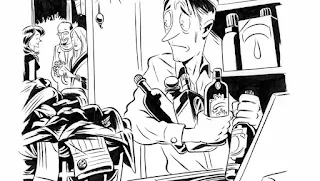## Current Trends in Global Alcoholic Beverage Consumption
The consumption patterns of alcoholic beverages are evolving rapidly, influenced by a myriad of factors such as cultural shifts, health trends, economic conditions, and technological advancements. This article delves into the latest trends shaping the global alcohol market, providing insights into what consumers are drinking, how their preferences are changing, and what this means for the industry.
### 1. Rise of Low and No-Alcohol Beverages
Health consciousness is at an all-time high, with consumers increasingly mindful of their alcohol intake. This shift has given rise to a booming market for low and no-alcohol beverages. From alcohol-free beers to low-ABV (Alcohol By Volume) spirits, these products cater to those who want to enjoy the social aspects of drinking without the adverse effects. Major brands and craft producers alike are expanding their portfolios to include these options, driven by demand from younger, health-focused demographics.
### 2. Craft and Artisan Beverages
Craft beverages continue to be a significant trend globally, with consumers seeking unique and high-quality drinking experiences. The craft beer movement, which started in the United States, has now spread worldwide, inspiring a surge in craft spirits and wines. Artisanal production methods, local ingredients, and innovative flavors are key selling points, appealing to consumers' desire for authenticity and individuality.
### 3. Sustainable and Ethical Choices
Sustainability is becoming a crucial factor in consumers' purchasing decisions. Eco-conscious drinkers are looking for brands that prioritize environmental responsibility, from sourcing ingredients sustainably to using eco-friendly packaging. Ethical practices, such as fair trade and community support, also play a significant role. Brands that can demonstrate a commitment to these values are gaining favor among a growing segment of socially responsible consumers.
### 4. Premiumization and Luxury
Despite economic uncertainties, there is a noticeable trend towards premiumization in the alcohol market. Consumers are willing to spend more on high-quality, luxury alcoholic beverages. This trend is evident in the growing popularity of premium spirits, aged wines, and limited-edition releases. The focus on premium products reflects a desire for quality over quantity and an interest in the story and craftsmanship behind the beverage.
### 5. Experiential Drinking
Experiential drinking is a trend that emphasizes the overall experience of consuming alcohol, rather than just the beverage itself. This includes the rise of immersive bar experiences, mixology, and personalized cocktails. Virtual and augmented reality are also being used to enhance the drinking experience, offering consumers a unique and engaging way to enjoy their favorite beverages.
### 6. Diverse Flavors and Innovations
Flavor innovation is at the forefront of the alcohol industry. Consumers are eager to explore new and exotic flavors, leading to a proliferation of experimental products. From botanical-infused gins to fruit-flavored beers and cask-finished spirits, the industry is constantly pushing the boundaries of taste. This trend is particularly prominent among younger consumers, who are more adventurous and willing to try new things.
### 7. Digital and Direct-to-Consumer Sales
The digital transformation has significantly impacted the way alcoholic beverages are marketed and sold. E-commerce and direct-to-consumer (DTC) sales channels have grown exponentially, especially in the wake of the COVID-19 pandemic. Brands are leveraging digital platforms to reach consumers directly, offering convenience, personalization, and a broader range of products. Online tastings, virtual events, and subscription services are also becoming popular, enhancing the digital drinking experience.
### Conclusion
The global trends in alcoholic beverage consumption are a testament to the dynamic nature of the industry. As consumer preferences evolve, brands must stay agile and innovative to meet changing demands. From health-conscious choices and sustainability to premiumization and digital sales, these trends offer valuable insights for industry stakeholders looking to thrive in the ever-changing alcohol market.
---
**Keywords**: global alcohol consumption trends, low and no-alcohol beverages, craft beverages, sustainable alcohol, premium alcoholic beverages, experiential drinking, flavor innovations, digital alcohol sales.






